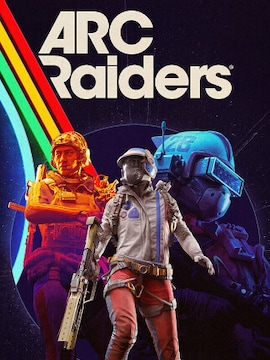Call of Duty keeps switching things up. Different eras, mechanics, tones – it never really sits still. Black Ops 6 went deep into early 90s conflict with a personal, tight story about betrayal and trust falling apart from the inside.
Black Ops 7 doesn’t just continue that story; it changes the scale. Now set in 2035, it leans into larger environments, new co-op options, and a campaign that’s built to be played solo or with a squad.
Here’s how the two stack up in terms of campaign, movement, multiplayer, and co-op structure.
Black Ops 7 vs Black Ops 6 Comparison
Call of Duty: Black Ops 6 puts you in the middle of the Gulf War. Frank Woods and his team get burned as traitors after a CIA setup. It’s a straight-up rogue operation from there. The missions stay on rails, but the pacing hits hard. Everything is designed to make you feel cornered, on the run, and completely cut off. No big open-world distractions, just a tense ride through a government betrayal.
Call of Duty: Black Ops 7 shifts into future warfare, dropping players into Avalon, a massive Mediterranean city filled with dense verticality and strange memory sequences. It stars David Mason, continuing threads from earlier Black Ops entries.
| Category | Black Ops 6 | Black Ops 7 |
|---|---|---|
| Setting & Era | Early 1990s, Gulf War, grounded Cold War-era conflict | 2035, near-future warfare in Avalon, a massive Mediterranean city |
| Story Tone & Focus | Tight, personal story about betrayal and trust falling apart from within the CIA. Rogue operation, constant feeling of being cornered and cut off. | Larger scale, mixing grounded combat with surreal memory and identity themes. Continues David Mason’s storyline with more experimental narrative elements. |
| Campaign Structure | Linear, on-rails missions with tight pacing and no open-world distractions. | Built from the ground up for full co-op. Can be played solo, but clearly designed around squads, flanking, and coordinated gadgets across larger environments. |
| Omnimovement System | Introduces Omnimovement: free directional control and momentum in a grounded format, smoother chaining of moves, less rigid combat. | Refines Omnimovement: tighter, more responsive movement. Vaulting, mantling, sliding and peeking are better integrated into map design for more consistent outplays. |
| Multiplayer Map Pool at Launch | Leaner launch map count, relied more on post-launch drops to fill the rotation. | 16 standard 6v6 maps 2 large 20v20 maps at launch. Diverse locations (e.g. neon Tokyo, icy Alaska) supporting vertical, long-range, and close-quarters play. |
| Cosmetics & Progression | Cosmetics tied mainly to BO6 ecosystem. | Carries over BO6 cosmetics: skins, charms, and bundles still usable in BO7 loadouts. Stronger continuity for long-term players. |
| Core MP & Modes Focus | Familiar competitive multiplayer with sharp gunplay, more traditional separation between campaign, MP, and co-op modes. | Standard competitive playlists plus a clear push toward co-op and hybrid PvE. Lines between campaign, multiplayer, and survival modes blur more than ever. |
| Zombies Mode | More traditional co-op experience, leaning on established Zombies/co-op formulas. | Round-based Zombies with huge maps, Survival Zones (BO2-style), Dark Aether setting, fast-pushing enemies, and high-pressure, crew-focused gameplay. |
| Endgame / PvE Structure | Co-op offerings are more classic and contained; fewer large-scale experiments. | Introduces Endgame: 32-player PvE mode with squads, open exploration, missions, operator upgrades, combat rating, and a final breach event with high-risk extraction (lose everything if you die before escaping). |
| Overall Design Philosophy | Compact and focused: a rogue narrative, bold new movement system, sharp but familiar multiplayer, and traditional co-op. | Expansive and experimental: larger campaign structure with co-op, bigger launch MP offering, and dual PvE pillars (Zombies Endgame) pushing the series into large-scale systems. |
| Best Suited For | Solo players who prefer a tight, consistent story campaign and classic CoD structure without too many experimental systems. | Fans of co-op, large-scale PvE, and experimental campaign design who want Call of Duty to push its format forward. |
But the real shift is structural. This is the first Call of Duty campaign designed with full co-op in mind. You can play it solo, sure, but it’s clearly built around teamwork flanking enemies, coordinating gadgets, handling objectives together. Story moments hit differently when you’re seeing them unfold alongside others. The campaign mixes grounded combat with surreal elements tied to memory and identity. It’s more experimental than most CoD entries, but still keeps things moving.
Omnimovement Changes
One of the biggest additions in Black Ops 6 was the Omnimovement system that gave you full control of direction and momentum in a grounded format. You could chain moves smoothly, dodge more intuitively, and make combat feel less rigid.
Black Ops 7 doesn’t scrap that. It refines it. Movement feels tighter, more responsive, and the tech behind it seems more stable. Vaulting, mantling, sliding, and leaning into angles all feel better integrated into map design. You’re not just moving smoother, but you’re using movement to outplay people more consistently. The game trusts you to be fast, and it supports that.
Multiplayer Maps and Modes
Black Ops 7 launches with 16 standard 6v6 maps and 2 larger maps for 20v20 battles. That’s a strong rotation, and it shows Treyarch isn’t skimping on variety. Locations range from neon-lit Tokyo streets to icy Alaskan terrain, each map playing to different strengths: vertical control, long sightlines, chaotic close-quarters. The environmental diversity helps the mode feel fresh even across long sessions.
Compared to Black Ops 6, which launched with a leaner map count, this is a clear step up. That earlier game relied heavily on post-launch drops to round out the pool. BO7 feels more ready out of the gate. It also carries over BO6’s cosmetics, meaning any skins, charms, or bundles you bought still show up in your loadouts.
Mode-wise, standard competitive playlists are back, but the attention is clearly on co-op and hybrid PvE experiences. The lines between campaign, multiplayer, and survival modes blur more than ever.
Endgame vs Zombies: Two Takes on Co-op
Zombies is back in BO7, keeping its round-based roots while adding massive maps and the return of Survival Zones from Black Ops 2. You get classic undead waves, perks, buildable gear, and high-stakes gameplay. The vibe is more relentless than ever; enemies push fast, and the new Dark Aether setting is a warped, ever-changing hell. It’s brutal, focused, and best played with a solid crew.
Then there’s Endgame. This is where Treyarch experiments. You drop in with 31 other players, split into squads, and explore a massive PvE space. You complete missions, upgrade your operator, raise your combat rating, and push toward a final breach event. If you die before extracting, you lose it all.
Conclusion: Two Games, Two Approaches
Black Ops 6 was compact and focused. It delivered a rogue narrative with a bold new movement system. Its multiplayer was familiar but sharp. Its co-op offerings leaned on tradition.
Black Ops 7 opens things up. The campaign changes structure entirely, offering co-op from the ground up. The map count at launch is larger. PvE now includes both traditional high-pressure Zombies and the slower, objective-driven structure of Endgame.
BO6 tested the waters for new ideas. BO7 commits to expanding the format without abandoning the identity of the series. For solo players, BO6 may still feel more consistent. But for fans of co-op systems and large-scale experimentation, Black Ops 7 looks like the most forward-leaning Treyarch entry in years.




